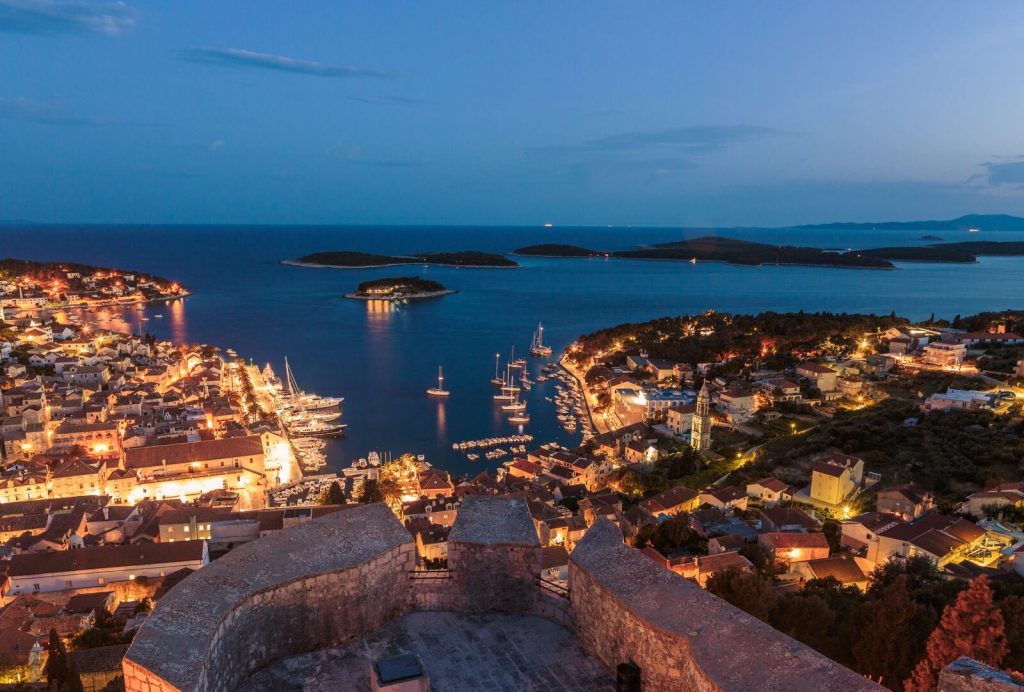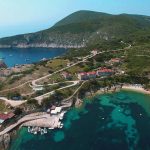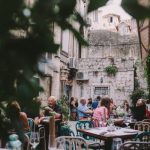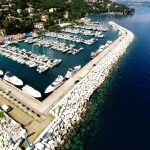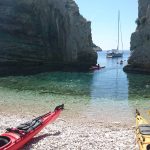Continuing our alphabet series, a nod to one of Croatia’s tourism champions and some gourmet delights on February 11, 2018
H is for…
Hvar
Where to even begin? Well, 150 years ago, as that’s when this world-renowned destination first introduced organised tourism in Croatia. The Health Society in Hvar was founded in May 1868, aiming to provide comfortable accommodation to people suffering from respiratory problems. Hvar’s pleasant climate paved the way for development of health tourism, with other features later joining the ranks as the island grew to become one of the top destinations in the country.
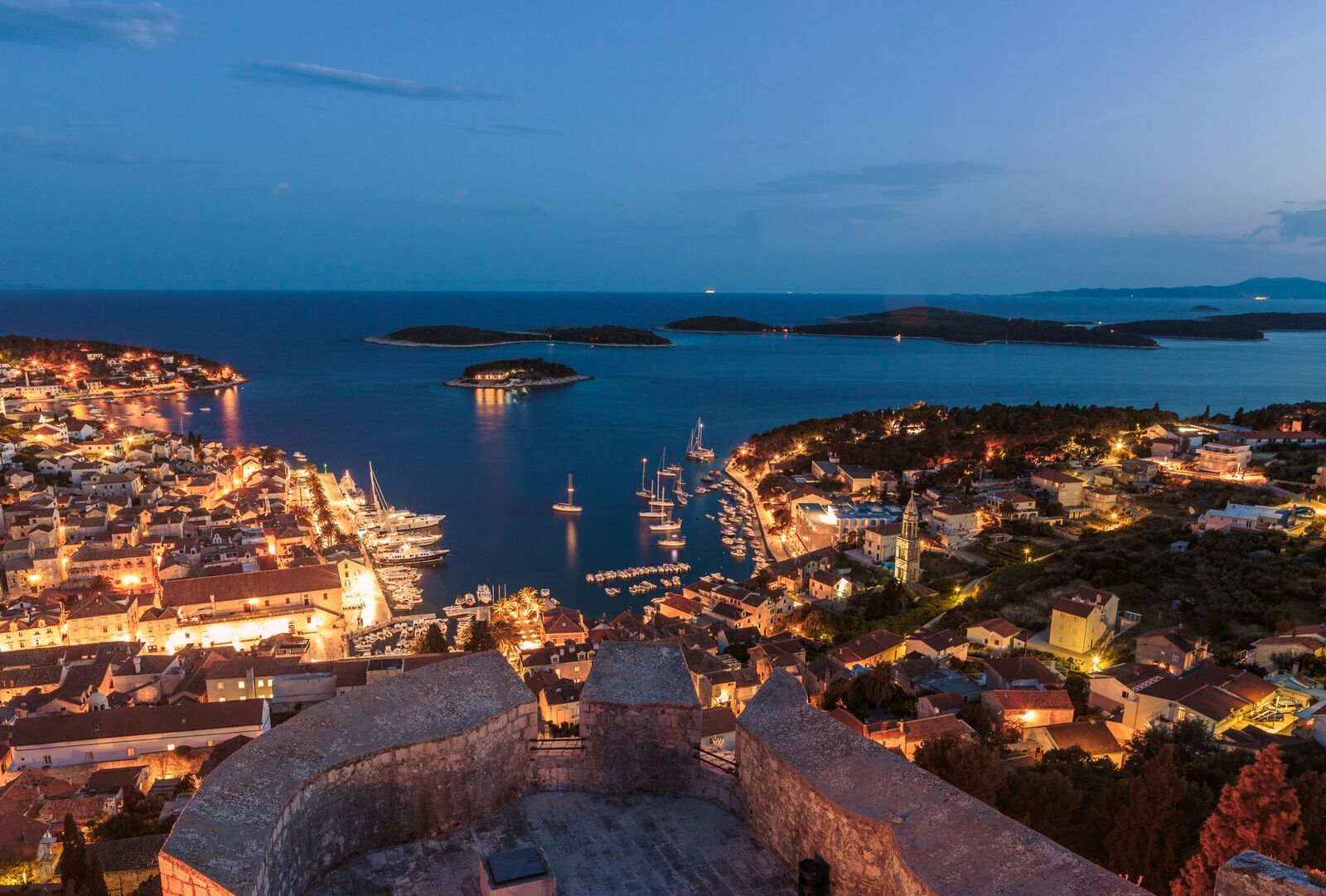
Hvar town / photo credit: Romulic and Stojcic
Hvar has no less than five UNESCO titles tied to its name, with a World Heritage Site as its crown jewel. Add to that the acclaimed gastronomic offer, award-winning wines and olive oil, luxurious accommodation facilities and the breath-taking scenery, and it’s no wonder Hvar gets a mention on every tourism-related top list that pops up in the media. Learn more about its iconic features here.
Host island
Host island seen from Vis
Hvar might be the darling of the international media, but there’s more than enough love to go around where islands are considered: meet Host, a tiny islet located at the entrance to Vis bay, another one of Croatia’s world famous island destinations. Some 2 kilometres before you roll into Vis town, you’ll be met with Host, named after the English naval officer Sir William Hoste who defeated the French fleet in the infamous Battle of Vis on March 13, 1811. The islet is nowadays uninhabited, but hosts a lighthouse built in 1873. Such a convenient name.
Host island
Hercules
We’re leaving southern Dalmatia for a minute and heading to Istria for a nod to the famous mythical demigod. The city of Pula is home to a remarkable fund of preserved ancient Roman architecture, with the oldest surviving monument known as the Gate of Hercules. Dating back to 1st century BC, the city gate was built with massive stone blocks; while the structure is fairly simple in design, a carving of a head perched on top of the arch was recognised by experts as a portrait of Hercules. Unfortunately, time did its thing and wore down Hercules’s facial features to an expresionless surface, but traces of his curly hair and beard have survived to its day, along with a club which is known as a symbol of this Roman demigod. Considering the ancient Roman Pula was named Colonia Iulia Pollentia Herculanea, Hercules might have been the town’s symbol as well.
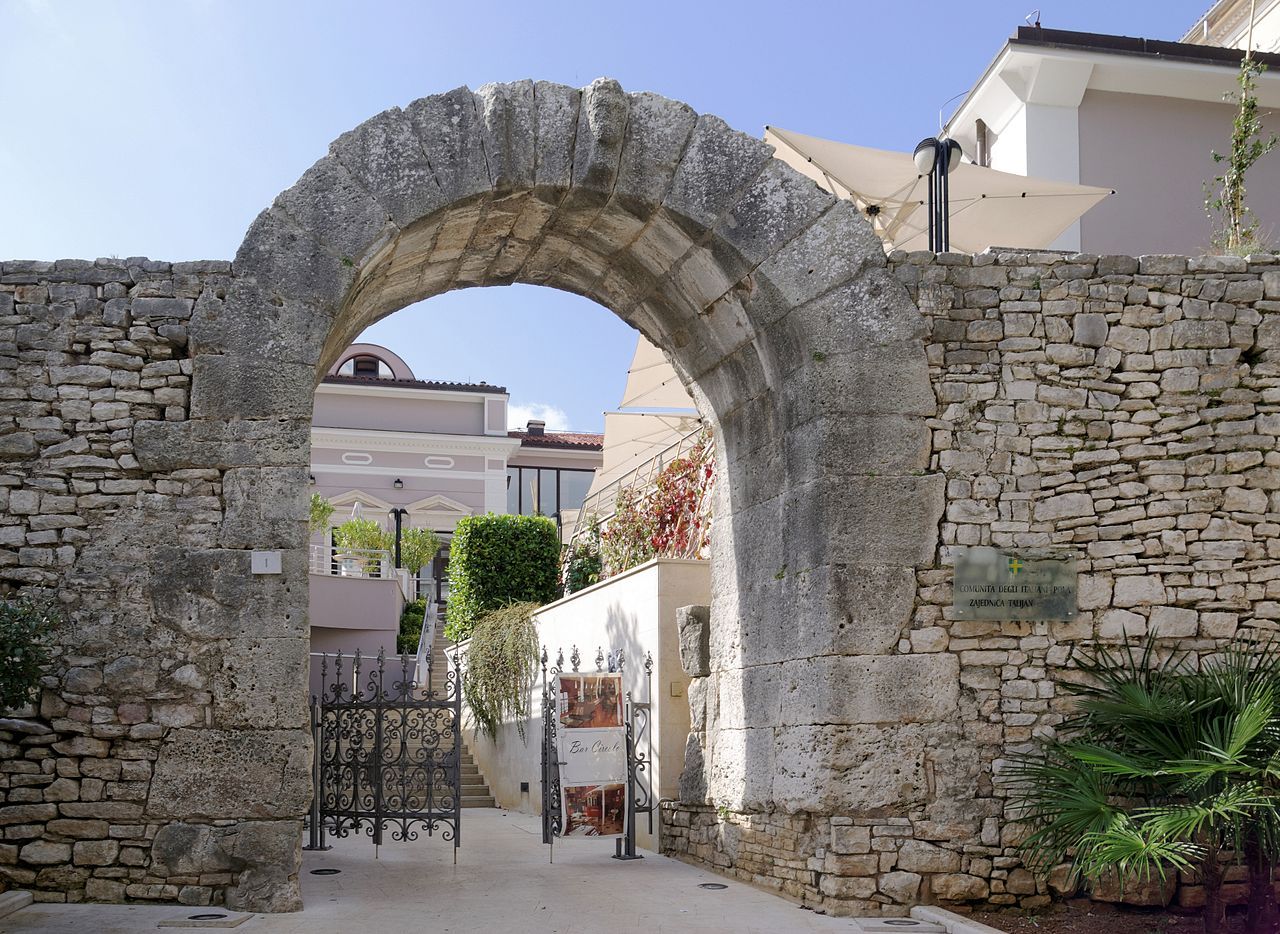
The Gate of Hercules in Pula
heritage
Considering how many books were written about Croatia’s natural, cultural and historical heritage, it would make no sense to try and cover this monumental topic in a single paragraph. What we can do instead is look to the creme de la creme of Croatia’s heritage – sites and landmarks protected by UNESCO.
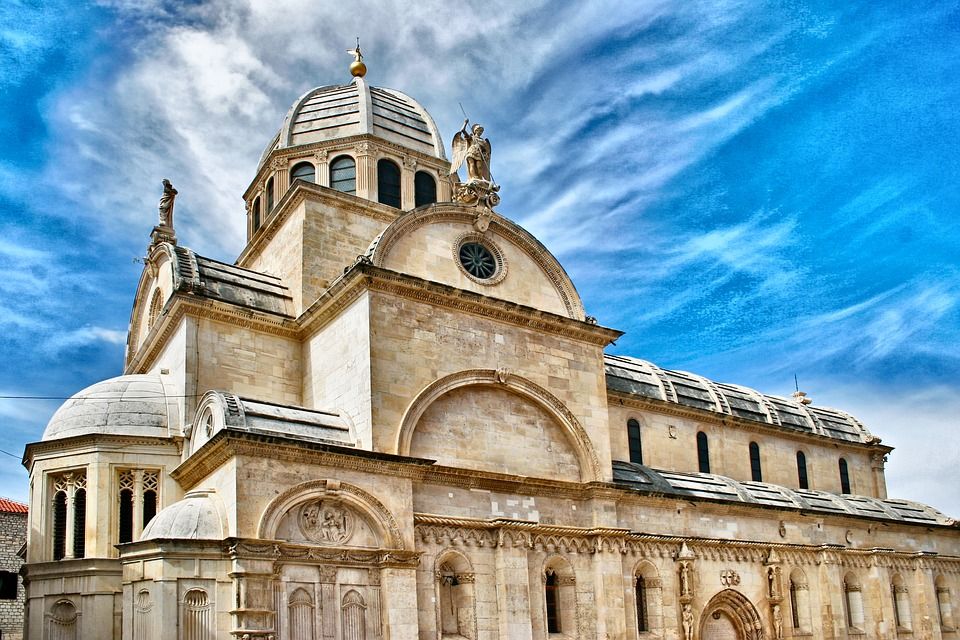
Cathedral of St James in Šibenik
Out of the ten Croatian items on the UNESCO World Heritage list, seven are located on the coast: the Euphrasian Basilica in Poreč, the historic city of Trogir, the Cathedral of St James in Šibenik, Venetian works of defence between the 16th and 17th centuries (St Nicholas Fortress in Šibenik and Zadar’s defensive walls), the historical complex of Split with the Palace of Diocletian, the Old City of Dubrovnik, and…
Hora
Man, H really is for Hvar. Hora, also known as Ager and the Stari Grad Plain, is an agricultural colony established by the ancient Greeks who arrived of Hvar in 384 BC and established a settlement which later developed into Stari Grad, the second largest town on the island. The newcomers introduced a land organisation system known as the chora, based on geometrical parcels separated by dry stone walls. The cadastral system remained in continuous agricultural use for the following 24 centuries, and the crops introduced by the Greek settlers are still known as some of Hvar’s leading agricultural products – grapes and olives. The site was inscribed on UNESCO’s World Heritage list in 2008: head to UNESCO to learn more about this gem and see this piece for more information on how to discover the ancient Hora.
Speaking of… can you name the remaining three UNESCO World Heritage Sites in Croatia? One should be fairly easy, as it’s one of the leading tourist destinations in the country and a world-renowned natural treasure. The other two are a bit harder to think of, so we’ll give you a pass – click here if you need some help.
Horvatinčić
I wouldn’t exactly say that sailing the Adriatic has any downsides, but you might bump into a few obstacles as you explore the Croatian waters: there’s the possibility of jugo or bura winds suddenly playing up, an occasional pesky reef hidden in shallow waters can cause a problem or two as well, and there’s always the chance of running into a yacht with Tomislav Horvatinčić at the helm. The notorious Croatian businessman is known for causing several traffic and maritime accidents in the last two decades, the most infamous one having happened in 2011; Horvatinčić crashed his yacht into a sailboat carrying two Italian tourists who later passed away due to serious injuries. The following trial dragged on for six years and ended with Horvatinčić acquitted of all charges on the basis of syncope – the key argument in his defense which claimed he experienced temporary loss of consciousness at the time of the accident. The verdict caused backlash among the public and the media, but Horvatinčić hasn’t made any significant attempts to change his dubious ways – before the verdict was issued in the first place, he had been spotted looking into a €2 million yacht in Italy in October 2017. This all might seem like a bad joke, but considering the state of the Croatian judicial system, it’s better to err on the safe side and try to avoid Horvatinčić at sea at all costs.
hobotnica
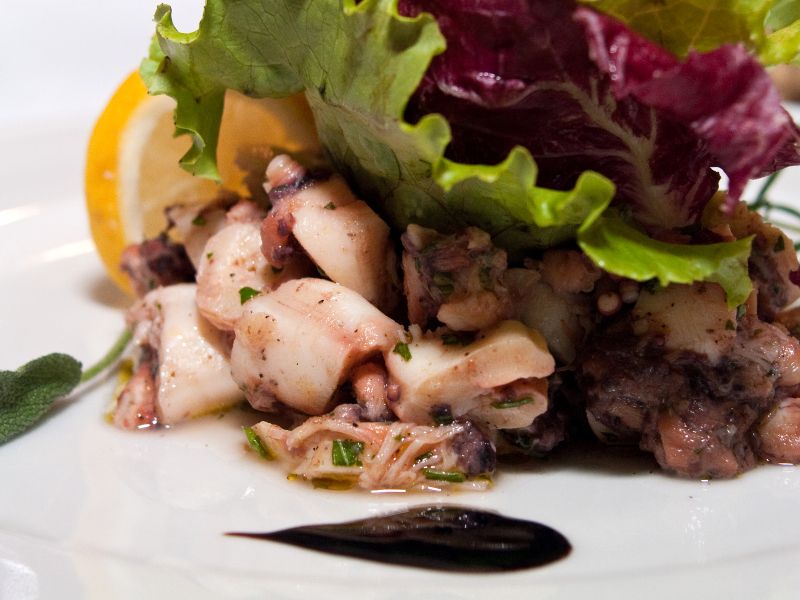
The simple act of typing out this heavenly word brought a smile to my face, along with a melancholic sigh – standing for ‘octopus’ in Croatian, hobotnica is one of the most beloved features of the Adriatic cuisine. It can be enjoyed many ways, but the leading two are having a plate of octopus salad or serving a mouth-watering pot of octopus peka – a traditional Croatian way of preparing one-pot dishes, baked under a dome-shaped lid covered in embers. Check out the video below:
https://www.youtube.com/watch?v=uH7e8ynqwC0?t=2m2s
herbs
Speaking of Croatian cuisine, many of our dishes wouldn’t be the same without the magical finishing touch: a generous dose of Mediterranean herbs which are happily thriving all over the coast. Rosemary, thyme, oregano, basil, parsley, bay leaf – you name it, and there’s a good chance it made its way onto your plate, transforming a simple cut of meat or fish into an unforgettable gastronomic experience. Actually, why stop at plates? Fill up your glass as well: travarica, a strong grape rakija infused with various herbs, is commonly referred to as ‘liquid medicine’ – a good excuse we all like to employ on occasion. Health benefits of our herbal wonders don’t stop at spirits; you’ll find lavender, rosemary and olives in plenty of natural cosmetics produced on the Croatian coast and islands.

Lavender fields on Hvar island / photo credit: Romulic and Stojcic
For some trivia: Krk island is the national leader in this particular category, being home to 1500 plant species; Lošinj follows with 1018, 230 of those being medicinal herbs.
Hanibal Lucić
Two weeks ago, we gave some love to Faust Vrančić, the Croatian inventor of the world’s first parachute prototype. This time around, another of Croatia’s great minds: Hanibal Lucić, a Renaissance poet and playwright born into a noble family on Hvar in 1485. Lucić is best known for producing the first Croatian translation of Ovid’s work, with translations of Petrarca and Lodovico Ariosto following soon thereafter. A man with a notable romantic streak, Lucić mostly wrote love poetry and drama; his work Pjesni ljuvene (Love poems) are still a cause of headache for many a highschool student owing to the indecipherable southern Chakavian dialect, and his play Robinja (Slave girl) is known as the first secular-themed play in Croatian literature.
Fun fact: doing as nobles often do, Lucić was openly contemptuous of the common people, once having referred to them as ‘a bunch who have no reason’. Not the best stance to make public on the 16th-century Hvar: between 1510 and 1514, the island saw an uprising of the people against Hvar’s noble families and their Venetian overlords. Things got quite heated during the Hvar Rebellion, and Lucić, having been too reckless with his public statements, was forced to flee to either Split or Trogir. He died on Hvar in 1553 and is buried in the family tomb below the altar in the Franciscan monastery.
Hrvatski
I should have probably put this one first, but we can always say we’re leaving the best for last: as you all probably know, our country is called Hrvatska in Croatian, with those opening H-R-V known to present some trouble to foreigners. Once you’ve got the pronunciation down, go on and learn a couple of phrases in the Hrvatski language, and you’ll find the locals are warming up to you at a faster pace. While you might not get it right on the first try, the important thing is that you’ve tried in the first place – we’re fond of tourists showing some effort to blend in and learn about the local culture. (We’re also fond of giggling at failed verbal attempts, but don’t let that discourage you – you’ll get there.) Take a look at 25 tips for learning Croatian shared by a foreigner who’s braving his way through the challenging waters of Croatian grammar and vocabulary. We also have a list of typical mistakes foreigners make when speaking Croatian. For an advanced lesson in pronunciation, click here, and don’t forget to check out our comprehensive guide to swearing in Croatian – part one and two. After all, knowing the right time and place to deliver a simple jebiga will get you further than any lenghty display of verbal prowess.

